- Home
- Tom Clancy
Shadow Warriors: Inside the Special Forces sic-3 Page 2
Shadow Warriors: Inside the Special Forces sic-3 Read online
Page 2
Even more difficult was the establishment of an intelligence and support mechanism inside Iran. Vaught did this partly with CIA support, but primarily by using his own assets, sending his own people into Iran to prepare the way. His plan called for establishing an intelligence support infrastructure in Tehran whose function was to verify that the hostages were being held in the Chancery, a ninety-room structure on the Embassy compound, and to arrange for trucks to be waiting near the helicopter landing site for transporting the unit, and later the hostages, back and forth between the landing site and the Embassy compound. This mission was accomplished by Major Dick Meadows, three Special Forces NCOs, and two agents provided by the CIA.
On April 1, 1980, a one-legged CIA pilot in a small two-engine plane flew Major John Carney into Iran at night. Carney's mission was to locate and lay out a 3,000-foot landing strip on a remote desert site in Iran called Desert One. This was to serve as the transload site for the shooters, as well as the refueling site for the helicopter force that would join them after they had been launched from the aircraft carrier Nimitz. The force was composed of eight Navy Sea Stallion helicopters — not the right aircraft for the job, but the best available in terms of range and payload.
Carney laid out the strip with the help of a small Honda dirt bike he brought on the plane. Once the field was established, he installed an airfield lighting system that could be turned on remotely from the cockpit of the lead C-130 (a duty he himself performed on the night of the landing).
On April 24, 1980, 132 members of the rescue force arrived at a forward staging base on Masirah Island near Oman. There they transloaded to C- 130s for the low-level flight to Desert One.
That night, the C-130s made it to the Desert One area with no unusual problems, but the helicopters did not arrive as scheduled. Of the eight Sea Stallions, six operational helicopters finally arrived at the desert landing strip an hour and a half late, after an encounter with a severe unforecasted sandstorm. The other two had had mechanical problems before reaching the sandstorm and had returned to the Nimitz. Six Sea Stallions were enough to carry out the mission — but only barely. If another was lost, then some part of the rescue force would have to be left behind, which was not a good idea. All of the force was essential.
Meanwhile, that hour-and-a-half delay made everybody nervous. The helicopters had to leave in time to reach the secluded landing site near Tehran before daylight.
The mission's luck did not improve. During refueling, one of the six remaining helicopters burned out a hydraulic pump. And now there were five — not enough to complete the mission — and it was too late to reach the hide site.
At that point, the decision was made to abort the mission. It was a choice no one wanted to make, but no other choice was possible.
And then came tragedy.
After refueling, one of the helicopters was maneuvering in a hover in a cloud of desert dust, following a flashlight to a touchdown location. The helicopter pilot thought the man with the flashlight was a combat ground controller, when in fact he was not. He was simply a man with a flashlight — possibly a C-130 crew member checking out his aircraft. Meanwhile, the helicopter pilot expected the man with the flashlight to be holding still. In fact, he was moving, trying to get away from the dust storm thrown up by the helicopter's blades. This combination of mistakes resulted in the helicopter veering so close to a C-130 that its blades clipped the C- 130's wingtip and ignited the fuel stored there, instantly setting off a flaming inferno. In moments, five men on the C-130 and three men on the helicopter were killed.
The commander of the helicopters then elected to abandon all the helicopters rather than risk further disasters. Everyone who wasn't then on a 130 scrambled aboard, and the best America could muster abandoned the Iranian desert site in shocked disarray.
The nation suffered a devastating humiliation. Burned and abandoned American equipment littered the desert. Eight Americans had died. The American hostages remained locked up in Tehran. America's enemies laughed.
This failure weighed heavily on the troops who had trained so hard and risked their lives in Iran, all of whom believed that if they could have gotten to Tehran, they could have done the job they'd been sent to do. The failure had in no way been their fault, but the fault of the men who had thrown them together so unprepared and underequipped.
The consequences of the Desert One failure included two key actions that would greatly transform the U.S. special missions capability in the future. First, two days after the failed mission, President Carter ordered the Pentagon to prepare a second rescue mission. Carter additionally ordered the Secretary of Defense to make sure that this time the mission had all the resources it needed. Second, the Secretary of Defense appointed an investigative panel, chaired by the former Chief of Naval Operations, Admiral James L. Holloway, to examine the Iranian hostage rescue attempt, and to make appropriate suggestions for improving future capability. The panel would recommend that a standing joint task force be established as a national-level asset, with its own headquarters, forces, and necessary capabilities for effective and responsive operations.
In August, Major General Richard "Dick" Scholtes became commander of a new organization, the JSOTF, and was given the mission for the second attempt at rescuing the hostages, code-named HONEY BADGER. The planning and training were soon underway, and featured serious improvements over the previous attempt. For example, modified Army Blackhawks would now fly the mission, with much greater reliability and range than the Navy RH- 53 Sea Stallions that had been used before. Several operational options were worked on, though again with a scarcity of solid intelligence (it was later learned from released hostages that on the date planned for the rescue attempt less than five percent of the hostages were where the intelligence community thought they were).
On President Ronald Reagan's Inauguration Day, January 20, 1981, the final rehearsal was being conducted at the training site in Texas when it all suddenly became moot. Word came in that the hostages had been released. The mission was no longer needed.
The United States military had had nothing to do with it. Rather, Iraq's invasion of Iran on September 22, 1980, had persuaded Iran that its national survival was at stake — and that it needed the $12 billion in assets frozen by the Carter administration (including major weapons systems purchased by the Shah) more than it needed the hostages. Iran made the initial moves to free the hostages — timing it to become a political issue in the upcoming election, because they expected a better deal from a Reagan administration. It worked. Though they did not get all $12 billion, the $8 billion they did get was not milk money.
Meanwhile, the training and preparation for Operation HONEY BADGER had greatly improved the readiness and capability of the units involved. Its cancellation would now allow Dick Scholtes to devote his full time and attention to future readiness.
In the days ahead, readiness and capabilities would grow enough for them to begin responding effectively to mission taskings from Washington. For example, an intelligence report that a prison camp in Laos still contained a number of American POWs from the Vietnam war sparked preparations for a covert rescue operation that would require the development of specific tactics, techniques, procedures, and special equipment.
These were developed and rehearsed as part of a very complex plan, involving the seizure of an airfield in a friendly country, from which the rescue would be launched. Before the launch, however, Dick Scholtes, a cautious man and a realist, asked for "U.S. eyes on the target" to validate the intelligence report. Not only did he want U.S. eyes, he wanted his own people to accompany the CIA's people. This did not happen. Instead, the Agency sent a bunch of their guys (none of them American) into Laos. Though they came back with hundreds of pictures, none showed anyone who could be verified as American. Scholtes continued to insist on sending his own people in to recon the site, but permission for this could not be obtained, and the mission eventually went away.
Even so, efforts were not w
asted. Once again, not only was the training useful, but the tactics, techniques, and equipment that had been developed specifically for the mission would remain useful.
Later, unwittingly looking forward to October 1985, the Norwegian government, concerned about the emerging terrorist threat and the possible vulnerability of its cruise liner industry, wondered if the United States had the expertise to "take down" a large luxury liner at sea. To find out, they provided the cruise liner Norwegian Princess as a training aid.
JSOTF expertly demonstrated they knew how to perform the task with panache — and in darkness.
On October 25, 1983, JSOTF took part in Operation URGENT FURY — the invasion of Grenada — in association with a larger force under the command of CINCLANT (Commander in Chief, Atlantic). URGENT FURY'S overall mission had three goals: to rescue American students at Grenada's Medical University just outside the capital, St. George's; to rescue the former governor general, who was being held under house arrest by the new Cuba-backed leftist regime; and to prevent the use of the island by the Cuban or Soviet military. The mission included taking over the entire island. It was not a well-run operation.
Though JSOTF was committed to URGENT FURY, the commitment came very late — too late to plan, prepare, and train appropriately. This problem was compounded by intelligence foulups.
As Dick Scholtes recalls: "Changes in command and control and in missions over the course of the days immediately before H-hour (the time of the attack) drove us very close to a major catastrophe on that island.
"At the start, on Thursday the twentieth, we were to run the mission unilaterally. Then, on Friday, CINCLANT was put in charge, with only a JSOTF involvement. Then, on Sunday, the Marine barracks in Beirut was blown up, a giant blow to the spirit of the Marine Corps, and this led again to major changes: During a command briefing at the Pentagon, the Commandant of the Marines announced to the Chairman (of the Joint Chiefs of Staff) that unless the Marines joined the attack on the island, the Corps would never recover.
"Less than forty-eight hours before H-hour, the Marines had become involved in URGENT FURY, which meant that a totally new overall commander had to be appointed, Admiral Metcalfe. Three major command-and-control changes had been made in as many days.
"Mission changes came just as fast and furious.
"On Monday, at the final briefing for Metcalfe, the Department of State (DOS) reps present announced that it was critical to seize the Richmond Hill Prison at H-hour — even though the DOS could not tell us who was in the prison, who we were to secure, and whether the guards were the good guys or the bad guys. 'That doesn't make sense,' I told them. 'Since we can't ascertain who is in the prison and who are the good guys and the bad guys, we will make it a follow-up target.' They insisted, so I asked for a twenty-four- to forty-eight-hour delay to give us time to gather better information. The delay was disapproved. (We had also been asking for an 0200 nighttime H-hour, but with little success. Everyone would be landing in daylight rather than darkness.) We now had a major change in mission for one of our major assault units — and without adequate intelligence. This meant, among other things, that we had to change the Blackhawk loading on the C-5s that were already at Pope Air Force Base — not easy to do in the time we had.
"Later, we learned why no one would accept our request for an 0200 H-hour or for a twenty-four- to forty-eight-hour delay. The DOS and the CIA had written a detailed plan for the seizure of the island. This plan included a seven-nation assisting force, which was to land at H+3 and then come under JSOTF control. These nations knew nine days before JSOTF was informed of the mission that the island would be invaded at 0500 on Tuesday, the twenty-fifth. There was no way we could have changed that.
"There were other intelligence mix-ups.
"For example, the intelligence community told us that all the medical students were located at the University's True Blue Campus, which we targeted. They were not. More than half were at Grand Anse, about two miles away on the other side of the island. And to top it off, the president of the university had been visiting the DOS two days before we started the planning, and no one thought to ask him where to find the students.
"Another example: The intelligence community claimed there were only two 40mm AA (antiaircraft) guns on the island. The truth was, the enemy had about six mixed 40mm and two quad 50s at the airfield. And at Fort Frederick, which overlooked the helicopter approach to Richmond Hill Prison, there were an additional two 40mms and two quad 50s.
"Another problem: air support. Without our AC-130 gunships, the entire mission would have been an even greater failure. And then Admiral Metcalfe had the audacity to warn me that no close air support would be available to us. I told him I was using only my organic assets, and I guess he never understood.
"Considering the challenges of this demanding operation, compounded by the half-baked command and mission changes, together with the risk of conducting such complex operations against heavily defended targets in broad daylight with little or no accurate intelligence information and without the correct support of conventional commanders, JSOTF somehow brought off the missions we'd been assigned and made lemonade out of a lemon."
One glaring example of the kind of problem Scholtes mentions was a mission performed by the Navy SEALs. At first light, the SEALs planned to airdrop a reconnaissance team with boats — called a night boat drop — and to observe and report activities at Salinas Airfield in preparation for a Ranger assault to secure the airfield. As it turned out, this SEAL team had never made a night boat drop, the two C-130 crews assigned to conduct the drop had never made a boat drop at all, and the drop did not take place at first light but in total darkness in a sudden and unforecasted squall. The waves were much higher than expected; one plane dropped its SEALs two miles from the other; and in the end, four SEALs drowned. Their bodies were never recovered.
Two other targets assigned to the SEALs were the governor general's mansion and the radio station approximately seven miles away. Even though they had trained to operate at night, in order to take advantage of the darkness, both SEAL teams were inserted in daylight. The SEAL team tasked with securing the governor general's mansion had the added complication of bringing in a three-man State Department radio team, which carried a portable broadcast radio with them to allow the governor general to broadcast to the nation that he was okay and still in charge.
As soon as they hit the ground, the SEAL team that was supposed to secure the radio station became involved in heavy fighting with an armed guard force. They were outmanned and outgunned. After the team leader and one of his men were wounded, the team was forced to withdraw back to the coast until they could be picked up at night.
The team securing the governor general's mansion fared better, but their operation was not without problems, either.
As their helicopters approached the mansion, they found no place to land, a consequence of poor intelligence preparation; the terrain was too steep and covered with large trees. That meant the assault team had to slide down a seventy-five-foot rope in order to get on the ground and clear a landing zone for the helicopter carrying the State Department radio team.
As the helicopter moved around the mansion's grounds, it began taking heavy antiaircraft fire from a nearby hill. Though the helicopter was hit several times and the copilot was severely wounded, the pilot did a magnificent job of keeping the helicopter from crashing (he later made it back to the operation's flagship, Guam, which had hospital facilities onboard).
Meanwhile, the SEALs had secured the facility, and had the governor and his wife well in hand, and in good spirits, when suddenly three armored personnel carriers appeared at the mansion's gate. The SEALs quickly got control of the situation, however, by calling in an AC-130 gunship. The gunship blasted the APCs just as they were swinging their turrets toward the mansion.
The SEALs did very well, considering what they had to work with. But there were failures above them.
During Operation URGENT FU
RY, Carl Stiner was in Beirut. Even so, he was able to monitor the battle on a SATCOM radio connection he shared with the Chairman of the Joint Chiefs of Staff, General Jack Vessey. Vessey had given Stiner the frequency of his private channel, so he could communicate directly with the Chairman, but it also allowed him to listen to all the reports coming in during URGENT FURY.
Because Stiner and Scholtes had been friends and neighbors at Fort Bragg, where Stiner had been Assistant Division Commander for Operations of the 82nd Airborne Division before he was sent to Lebanon in August 1983, listening to the SATCOM reports was a disheartening experience. "I could really feel how Dick Scholtes must have suffered," he observes. "All caused by factors over which he had no control."
For the next ten months, Dick Scholtes worked day and night to make sure such things would never happen again, and to develop the best capability possible for counterterrorism and other unanticipated special mission requirements. In August 1984, when Stiner himself assumed command of JSOTF, he received from Dick Scholtes the best trained and most competent joint headquarters and the finest special missions units in the world.
Stiner's mission "was to make it even better by making sure the United States was never so caught by surprise that it had no forces appropriately prepared to deal with the situation. When a Joint Special Operations Task Force is committed, all other options for solving the problem have either proved inappropriate or inadequate. Thus the stakes are high."
But no matter how superbly trained and prepared you are, operations can fail, even when you make all the right moves. Sometimes the terrorists operate within secure sanctuaries, such as Beirut, where they can't be hit. Sometimes delay and indecision from above prevent you from taking timely action to seize the best opportunities.

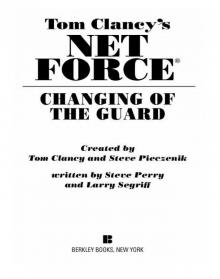 Changing of the Guard
Changing of the Guard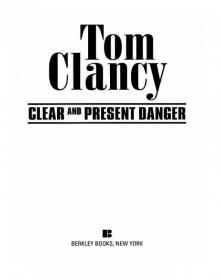 Clear and Present Danger
Clear and Present Danger Hounds of Rome
Hounds of Rome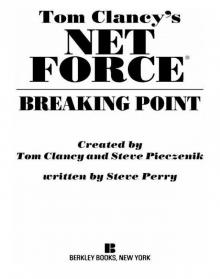 Breaking Point
Breaking Point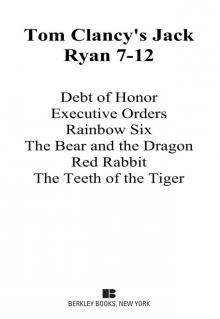 Tom Clancy's Jack Ryan Books 7-12
Tom Clancy's Jack Ryan Books 7-12 Full Force and Effect
Full Force and Effect The Archimedes Effect
The Archimedes Effect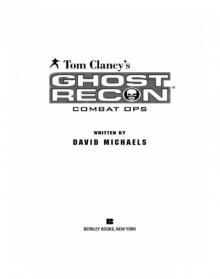 Combat Ops
Combat Ops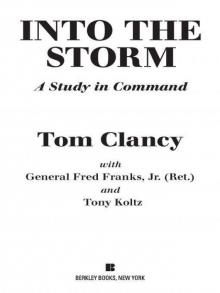 Into the Storm: On the Ground in Iraq
Into the Storm: On the Ground in Iraq Under Fire
Under Fire Point of Impact
Point of Impact Red Rabbit
Red Rabbit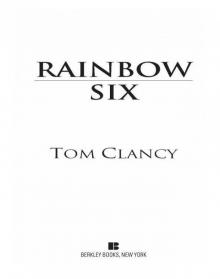 Rainbow Six
Rainbow Six The Hunt for Red October
The Hunt for Red October The Teeth of the Tiger
The Teeth of the Tiger Conviction (2009)
Conviction (2009)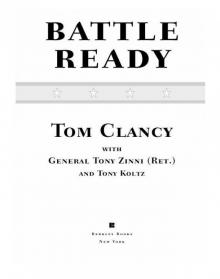 Battle Ready
Battle Ready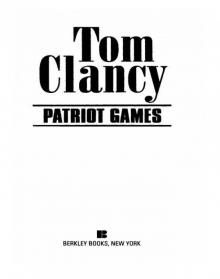 Patriot Games
Patriot Games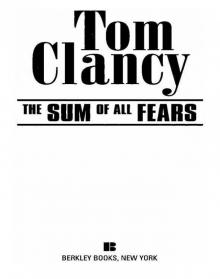 The Sum of All Fears
The Sum of All Fears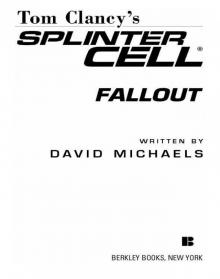 Fallout (2007)
Fallout (2007) Red Storm Rising
Red Storm Rising The Cardinal of the Kremlin
The Cardinal of the Kremlin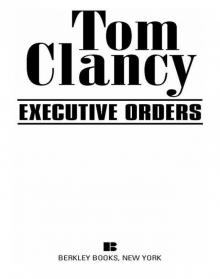 Executive Orders
Executive Orders Lincoln, the unknown
Lincoln, the unknown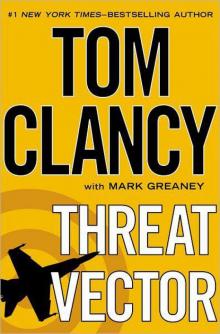 Threat Vector
Threat Vector The Hunted
The Hunted Shadow Warriors: Inside the Special Forces
Shadow Warriors: Inside the Special Forces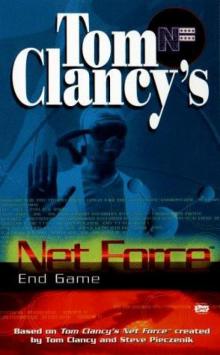 End Game
End Game Special Forces: A Guided Tour of U.S. Army Special Forces
Special Forces: A Guided Tour of U.S. Army Special Forces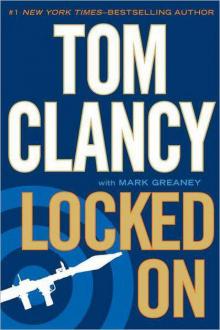 Locked On
Locked On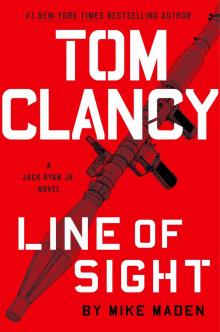 Line of Sight
Line of Sight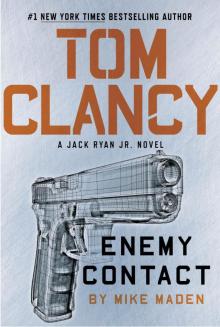 Tom Clancy Enemy Contact - Mike Maden
Tom Clancy Enemy Contact - Mike Maden Fighter Wing: A Guided Tour of an Air Force Combat Wing
Fighter Wing: A Guided Tour of an Air Force Combat Wing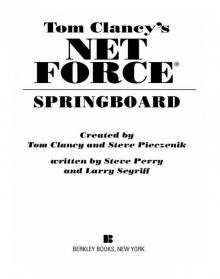 Springboard
Springboard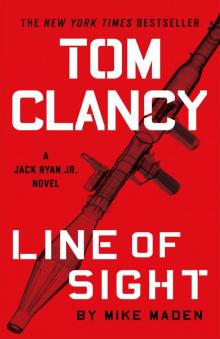 Line of Sight - Mike Maden
Line of Sight - Mike Maden EndWar
EndWar Dead or Alive
Dead or Alive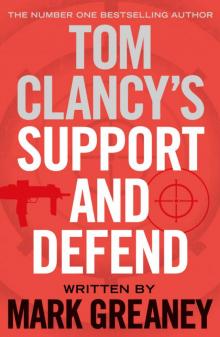 Tom Clancy Support and Defend
Tom Clancy Support and Defend Checkmate
Checkmate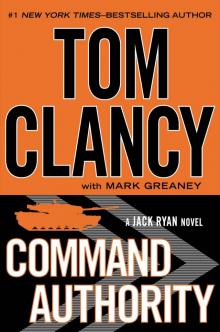 Command Authority
Command Authority Carrier: A Guided Tour of an Aircraft Carrier
Carrier: A Guided Tour of an Aircraft Carrier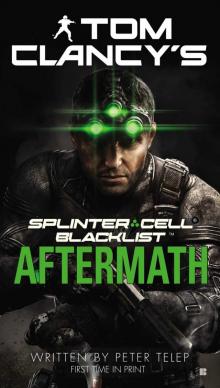 Blacklist Aftermath
Blacklist Aftermath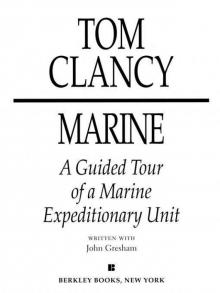 Marine: A Guided Tour of a Marine Expeditionary Unit
Marine: A Guided Tour of a Marine Expeditionary Unit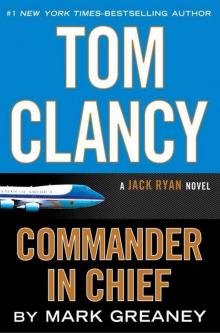 Commander-In-Chief
Commander-In-Chief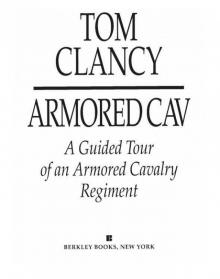 Armored Cav: A Guided Tour of an Armored Cavalry Regiment
Armored Cav: A Guided Tour of an Armored Cavalry Regiment Tom Clancy's Jack Ryan Books 1-6
Tom Clancy's Jack Ryan Books 1-6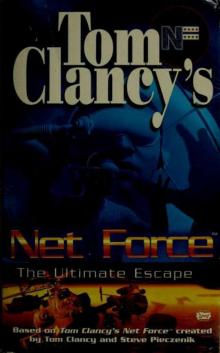 The Ultimate Escape
The Ultimate Escape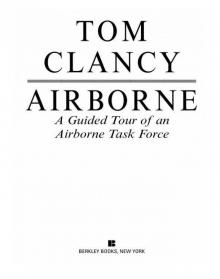 Airborne: A Guided Tour of an Airborne Task Force
Airborne: A Guided Tour of an Airborne Task Force Debt of Honor
Debt of Honor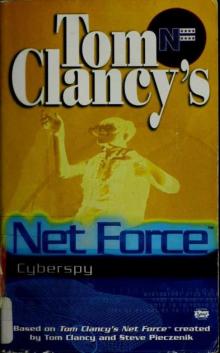 Cyberspy
Cyberspy Point of Contact
Point of Contact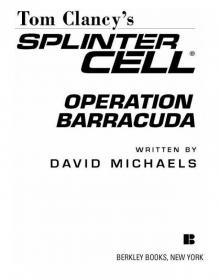 Operation Barracuda (2005)
Operation Barracuda (2005)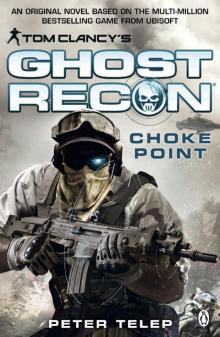 Choke Point
Choke Point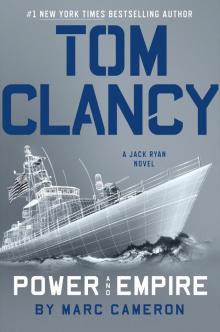 Power and Empire
Power and Empire Every Man a Tiger: The Gulf War Air Campaign
Every Man a Tiger: The Gulf War Air Campaign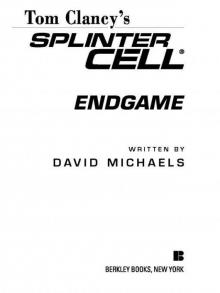 Endgame (1998)
Endgame (1998)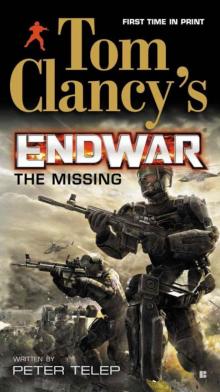 EndWar: The Missing
EndWar: The Missing Splinter Cell (2004)
Splinter Cell (2004) The Great Race
The Great Race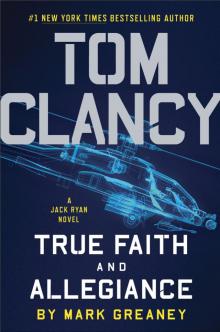 True Faith and Allegiance
True Faith and Allegiance Deathworld
Deathworld Ghost Recon (2008)
Ghost Recon (2008) Duel Identity
Duel Identity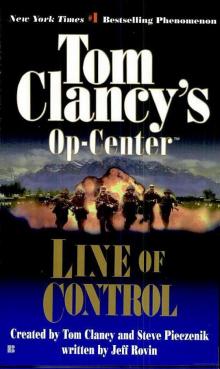 Line of Control o-8
Line of Control o-8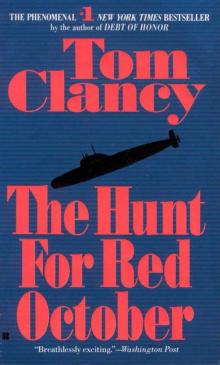 The Hunt for Red October jr-3
The Hunt for Red October jr-3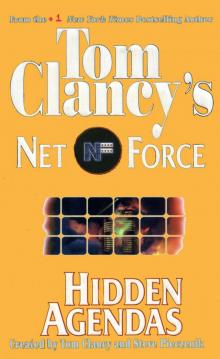 Hidden Agendas nf-2
Hidden Agendas nf-2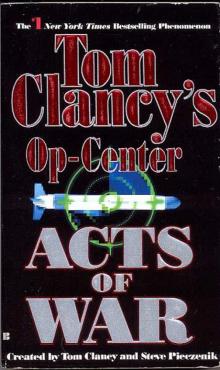 Acts of War oc-4
Acts of War oc-4 Ruthless.Com pp-2
Ruthless.Com pp-2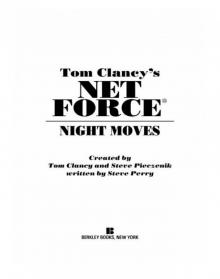 Night Moves
Night Moves The Hounds of Rome - Mystery of a Fugitive Priest
The Hounds of Rome - Mystery of a Fugitive Priest Into the Storm: On the Ground in Iraq sic-1
Into the Storm: On the Ground in Iraq sic-1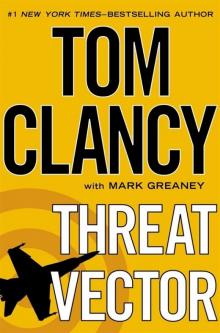 Threat Vector jrj-4
Threat Vector jrj-4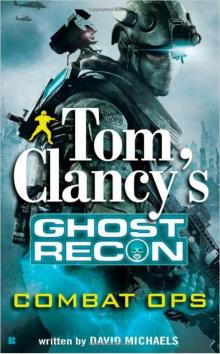 Combat Ops gr-2
Combat Ops gr-2 Virtual Vandals nfe-1
Virtual Vandals nfe-1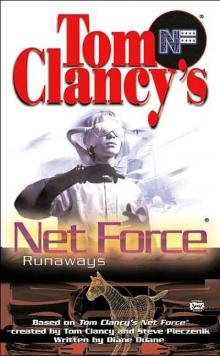 Runaways nfe-16
Runaways nfe-16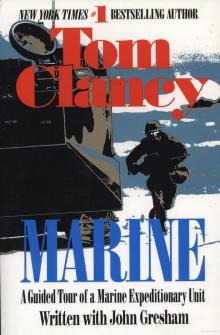 Marine: A Guided Tour of a Marine Expeditionary Unit tcml-4
Marine: A Guided Tour of a Marine Expeditionary Unit tcml-4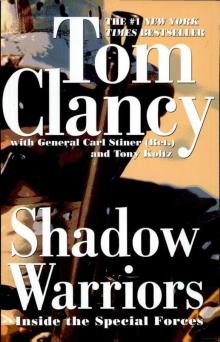 Shadow Warriors: Inside the Special Forces sic-3
Shadow Warriors: Inside the Special Forces sic-3 Jack Ryan Books 1-6
Jack Ryan Books 1-6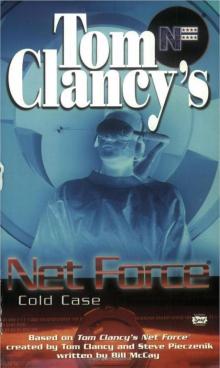 Cold Case nfe-15
Cold Case nfe-15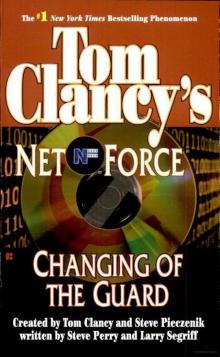 Changing of the Guard nf-8
Changing of the Guard nf-8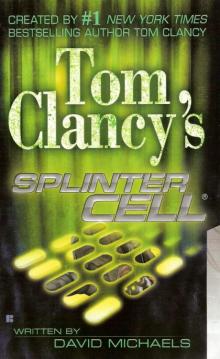 Splinter Cell sc-1
Splinter Cell sc-1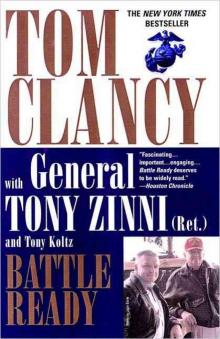 Battle Ready sic-4
Battle Ready sic-4 The Bear and the Dragon jrao-11
The Bear and the Dragon jrao-11 Fighter Wing: A Guided Tour of an Air Force Combat Wing tcml-3
Fighter Wing: A Guided Tour of an Air Force Combat Wing tcml-3 Patriot Games jr-1
Patriot Games jr-1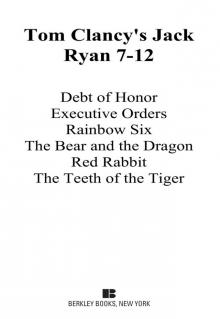 Jack Ryan Books 7-12
Jack Ryan Books 7-12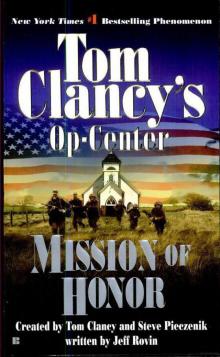 Mission of Honor o-9
Mission of Honor o-9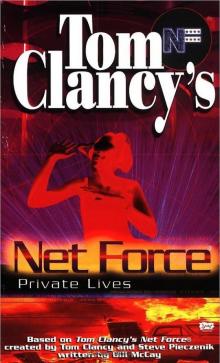 Private Lives nfe-9
Private Lives nfe-9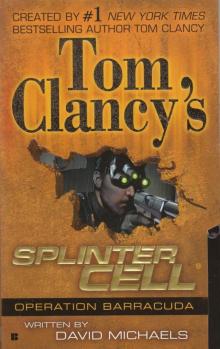 Operation Barracuda sc-2
Operation Barracuda sc-2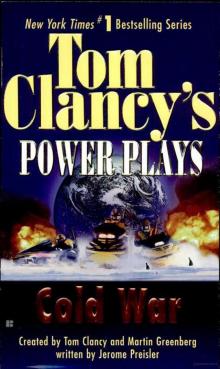 Cold War pp-5
Cold War pp-5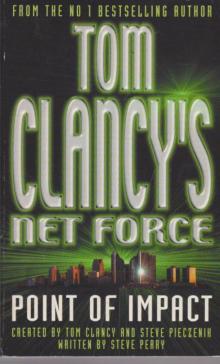 Point of Impact nf-5
Point of Impact nf-5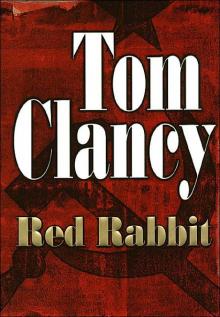 Red Rabbit jr-9
Red Rabbit jr-9 The Deadliest Game nfe-2
The Deadliest Game nfe-2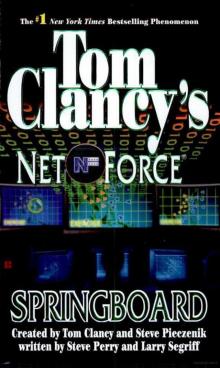 Springboard nf-9
Springboard nf-9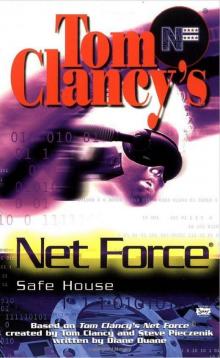 Safe House nfe-10
Safe House nfe-10 EndWar e-1
EndWar e-1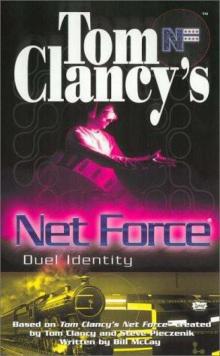 Duel Identity nfe-12
Duel Identity nfe-12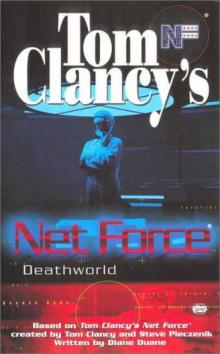 Deathworld nfe-13
Deathworld nfe-13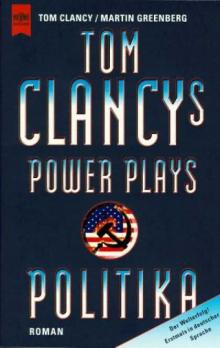 Politika pp-1
Politika pp-1 Rainbow Six jr-9
Rainbow Six jr-9 Tom Clancy's Power Plays 1 - 4
Tom Clancy's Power Plays 1 - 4 Endgame sc-6
Endgame sc-6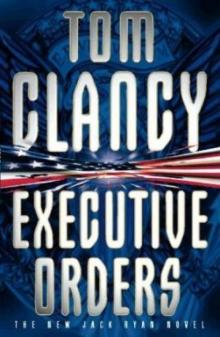 Executive Orders jr-7
Executive Orders jr-7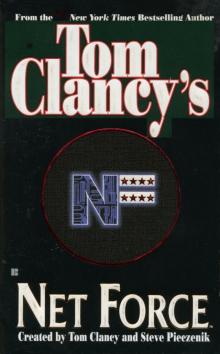 Net Force nf-1
Net Force nf-1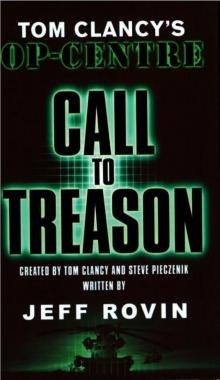 Call to Treason o-11
Call to Treason o-11 Locked On jrj-3
Locked On jrj-3 Against All Enemies
Against All Enemies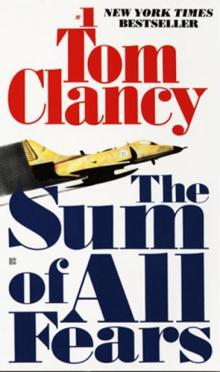 The Sum of All Fears jr-7
The Sum of All Fears jr-7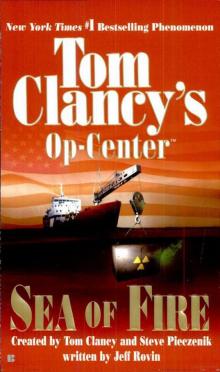 Sea of Fire o-10
Sea of Fire o-10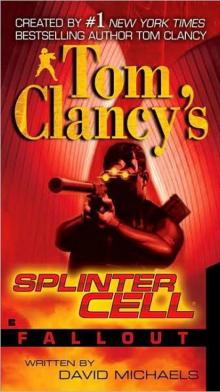 Fallout sc-4
Fallout sc-4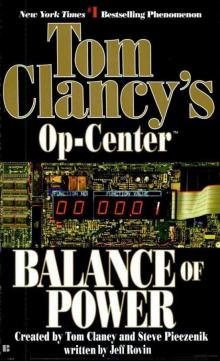 Balance of Power o-5
Balance of Power o-5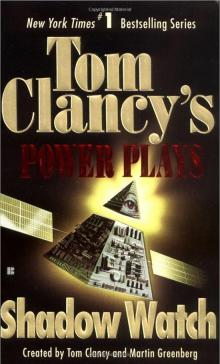 Shadow Watch pp-3
Shadow Watch pp-3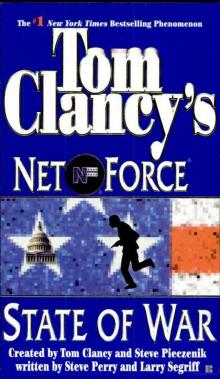 State of War nf-7
State of War nf-7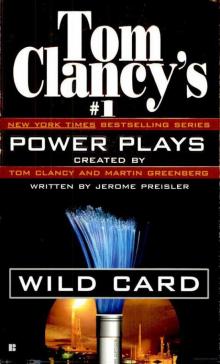 Wild Card pp-8
Wild Card pp-8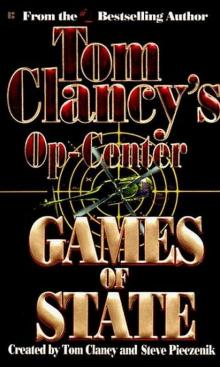 Games of State o-3
Games of State o-3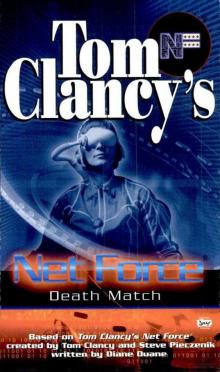 Death Match nfe-18
Death Match nfe-18 Against All Enemies mm-1
Against All Enemies mm-1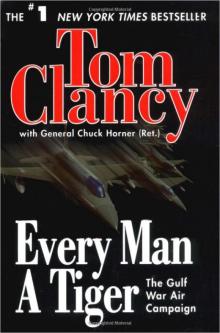 Every Man a Tiger: The Gulf War Air Campaign sic-2
Every Man a Tiger: The Gulf War Air Campaign sic-2 Cybernation nf-6
Cybernation nf-6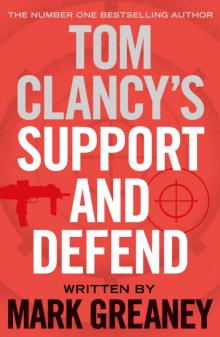 Support and Defend
Support and Defend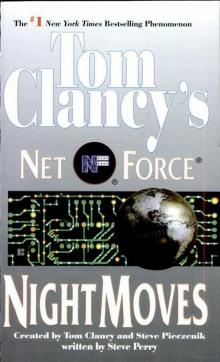 Night Moves nf-3
Night Moves nf-3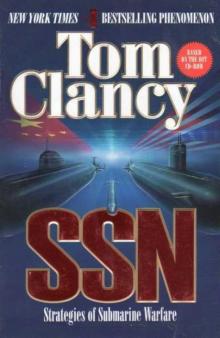 SSN
SSN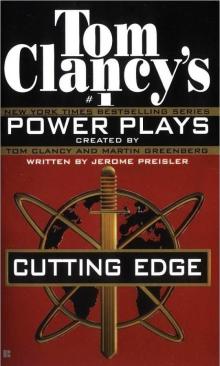 Cutting Edge pp-6
Cutting Edge pp-6 The Cardinal of the Kremlin jrao-5
The Cardinal of the Kremlin jrao-5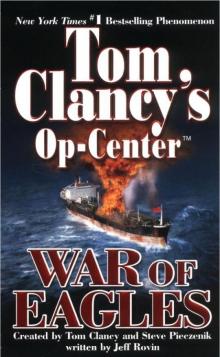 War of Eagles o-12
War of Eagles o-12 Op-Center o-1
Op-Center o-1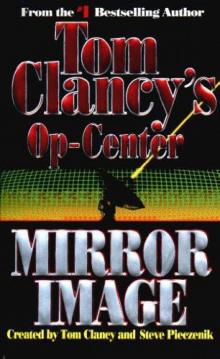 Mirror Image o-2
Mirror Image o-2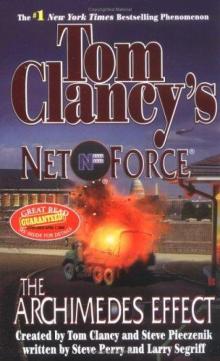 The Archimedes Effect nf-10
The Archimedes Effect nf-10 Teeth of the Tiger jrj-1
Teeth of the Tiger jrj-1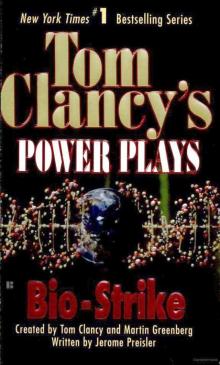 Bio-Strike pp-4
Bio-Strike pp-4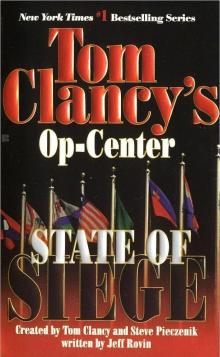 State of Siege o-6
State of Siege o-6 Debt of Honor jr-6
Debt of Honor jr-6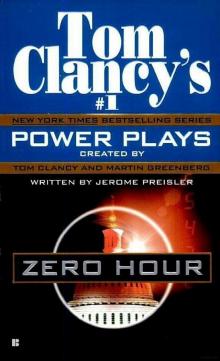 Zero Hour pp-7
Zero Hour pp-7 Ghost Recon gr-1
Ghost Recon gr-1 Command Authority jr-10
Command Authority jr-10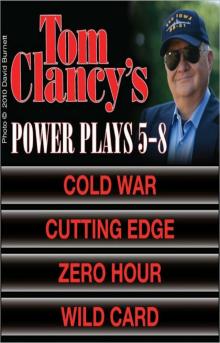 Tom Clancy's Power Plays 5 - 8
Tom Clancy's Power Plays 5 - 8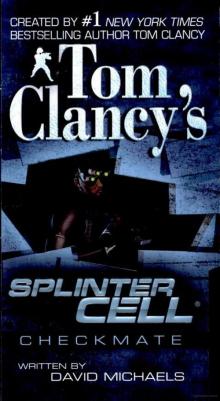 Checkmate sc-3
Checkmate sc-3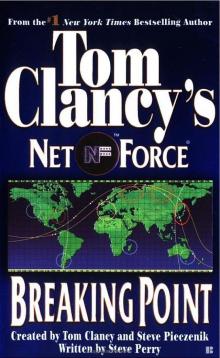 Breaking Point nf-4
Breaking Point nf-4 Gameprey nfe-11
Gameprey nfe-11 The Hunted e-2
The Hunted e-2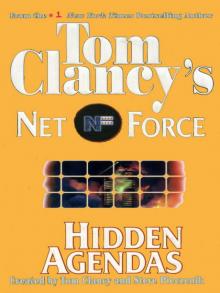 Hidden Agendas
Hidden Agendas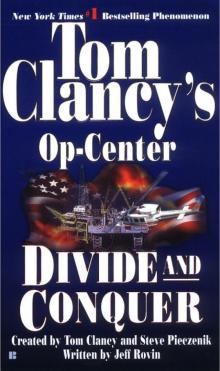 Divide and Conquer o-7
Divide and Conquer o-7